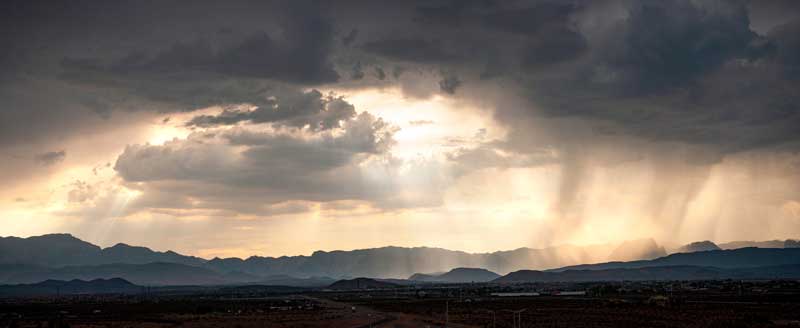

The Monsoons Are Back!
BY BETTY BOYD
Water is life. It is that time of year again, between July and September, when we get monsoonal rain. According to the Weather Channel, a monsoon is a seasonal change in winds, which helps draw moisture into the Southwest and often comes out of nowhere, pouring down gallons of water on arid earth. Some threats include thunder, lightning, flash flooding, downburst winds, and dust storms.
I moved here in 2019 from Tennessee, where there is no monsoonal season. It rains a lot there all year (an average of 132 inches for the entire state). At one time, I lived in Arizona (Phoenix gets 8.03 inches annually) and experienced monsoon season, so I was already aware of how little moisture the Vegas Valley receives.
Las Vegas has the longest record for no rainfall for 240 days. According to the National Climatic Data Center, Nevada is the driest state in the nation, with Las Vegas averaging only 26 days of rain.
As we all know, weather can be unpredictable. For instance, Las Vegas receives an average of 4.2 inches per year. Yet, in 2019 we had almost 6 inches, which is very unusual for this area, while on the other hand, in 2020, we had around 2 inches, making the drought worse.
Typically, the rains during the monsoon season occur later in the summer. The Southwestern states, including portions of New Mexico, Arizona, Utah, Colorado, Texas, and California, receive over half of their annual precipitation from monsoons. So, when it rained the other day, and the wind blew, and thunder and lightning were on the scene, I was as delighted as everyone to have the monsoon season with us again.
So, get your umbrellas ready! You may not see rain now, but it is coming to help with the greening of plants and feeding a thirsty land with much-needed moisture.

